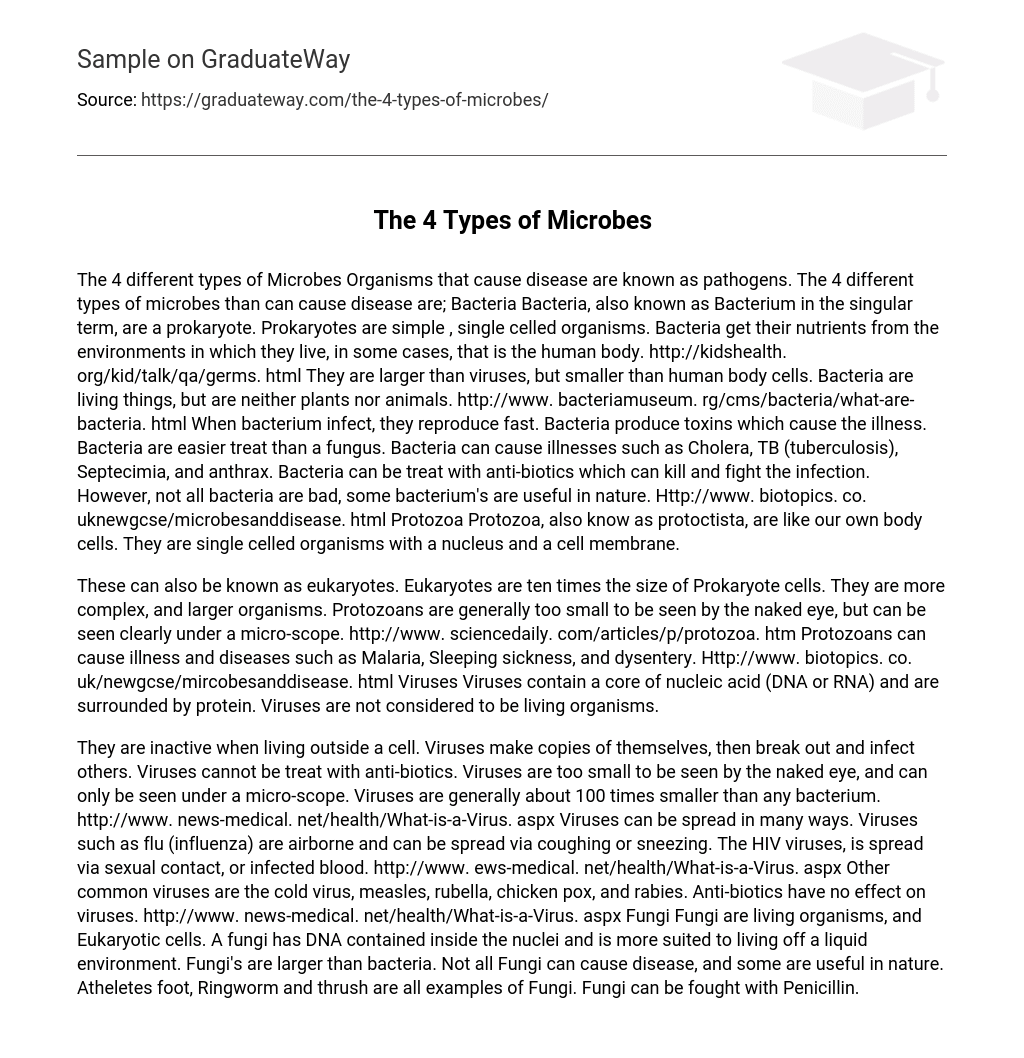The 4 different types of microbes than can cause disease are;
Bacteria
Bacteria, also known as Bacterium in the singular term, are a prokaryote. Prokaryotes are simple , single celled organisms. Bacteria get their nutrients from the environments in which they live, in some cases, that is the human body. They are larger than viruses, but smaller than human body cells. Bacteria are living things, but are neither plants nor animals.
When bacterium infect, they reproduce fast. Bacteria produce toxins which cause the illness. Bacteria are easier treat than a fungus. Bacteria can cause illnesses such as Cholera, TB (tuberculosis), Septecimia, and anthrax. Bacteria can be treat with anti-biotics which can kill and fight the infection. However, not all bacteria are bad, some bacterium’s are useful in nature.
Protozoa
Protozoa, also know as protoctista, are like our own body cells. They are single celled organisms with a nucleus and a cell membrane. These can also be known as eukaryotes. Eukaryotes are ten times the size of Prokaryote cells. They are more complex, and larger organisms. Protozoans are generally too small to be seen by the naked eye, but can be seen clearly under a micro-scope. Protozoans can cause illness and diseases such as Malaria, Sleeping sickness, and dysentery.
Viruses
Viruses contain a core of nucleic acid (DNA or RNA) and are surrounded by protein. Viruses are not considered to be living organisms. They are inactive when living outside a cell. Viruses make copies of themselves, then break out and infect others. Viruses cannot be treat with anti-biotics. Viruses are too small to be seen by the naked eye, and can only be seen under a micro-scope. Viruses are generally about 100 times smaller than any bacterium.
Viruses can be spread in many ways. Viruses such as flu (influenza) are airborne and can be spread via coughing or sneezing. The HIV viruses, is spread via sexual contact, or infected blood. Other common viruses are the cold virus, measles, rubella, chicken pox, and rabies. Anti-biotics have no effect on viruses.
Fungi
Fungi are living organisms, and Eukaryotic cells. A fungi has DNA contained inside the nuclei and is more suited to living off a liquid environment. Fungi’s are larger than bacteria. Not all Fungi can cause disease, and some are useful in nature. Atheletes foot, Ringworm and thrush are all examples of Fungi. Fungi can be fought with Penicillin.





